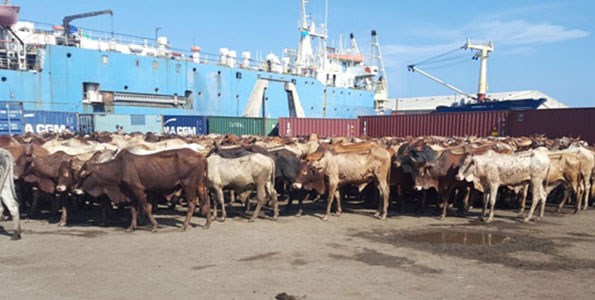As the blessed Eid al-Adha of 2025 approaches, Muslims are turning their attention to livestock prices in Somalia and the impact of the current economic situation.
Sacrifice is a significant religious ritual, and it represents a primary source of income for many families in Somalia who heavily rely on livestock.
So, what are the key features of Somalia’s current economic conditions, and how might they affect livestock prices in Somalia?
Overview of Somalia’s Economic Situation
Somalia is an emerging economy facing both challenges and opportunities.
The Somali economy primarily depends on vital sectors such as:
- Livestock: This is the backbone of the economy, with exports of live animals and meat constituting a large portion of national revenue.
- Agriculture: Despite climatic challenges, agriculture contributes to food supply and employs a significant portion of the population.
- Remittances from Abroad: Remittances from Somali expatriates provide substantial support to the local economy and are used to meet basic needs and for investment.
- Services and Trade: These sectors are experiencing gradual growth, especially in major cities.

Factors that Influence Livestock Prices in Somalia – 2025 Eid al-Adha
Livestock prices in Somalia are influenced by several key factors, and understanding them is crucial for predicting 2025 prices:
Availability of Livestock Supply:
Rainfall and Pastures: The quantity and quality of rainfall play a decisive role in the health and growth of livestock.
If rain seasons are good until mid-2025, a sufficient supply of sacrificial animals is expected, which could help stabilize or even relatively lower prices.
Animal Diseases: Animal epidemics can affect the number of available livestock, leading to higher prices.
Vaccination efforts and veterinary care play an important role here.
Citizens’ Purchasing Power:
Inflation Rates: If inflation continues to rise, citizens’ purchasing power may decrease, affecting their ability to purchase sacrificial animals at high prices.
Expatriate Remittances: Money transfers from abroad are an important source of income for many families, and an increase or decrease in these remittances could affect the demand for sacrificial animals.
Feed and Transportation Costs:
Feed Prices: The prices of imported or local feed can affect the cost of raising livestock and, consequently, their final selling price.
Transportation Costs: Fuel and transportation costs from breeding areas to major markets impact the final prices of sacrificial animals.
Local and External Demand:
Local Demand: Demand for sacrificial animals naturally increases during the Eid al-Adha season.
External Demand: If there is high demand for Somali livestock for export, it could affect their availability in the local market and thus their prices.
Livestock prices in Somalia are a focal point for many, influenced by a complex set of economic and climatic factors.
Despite the challenges, the resilience of the Somali economy and its reliance on livestock offer a glimmer of hope for price stability if climatic conditions improve and development efforts continue.


